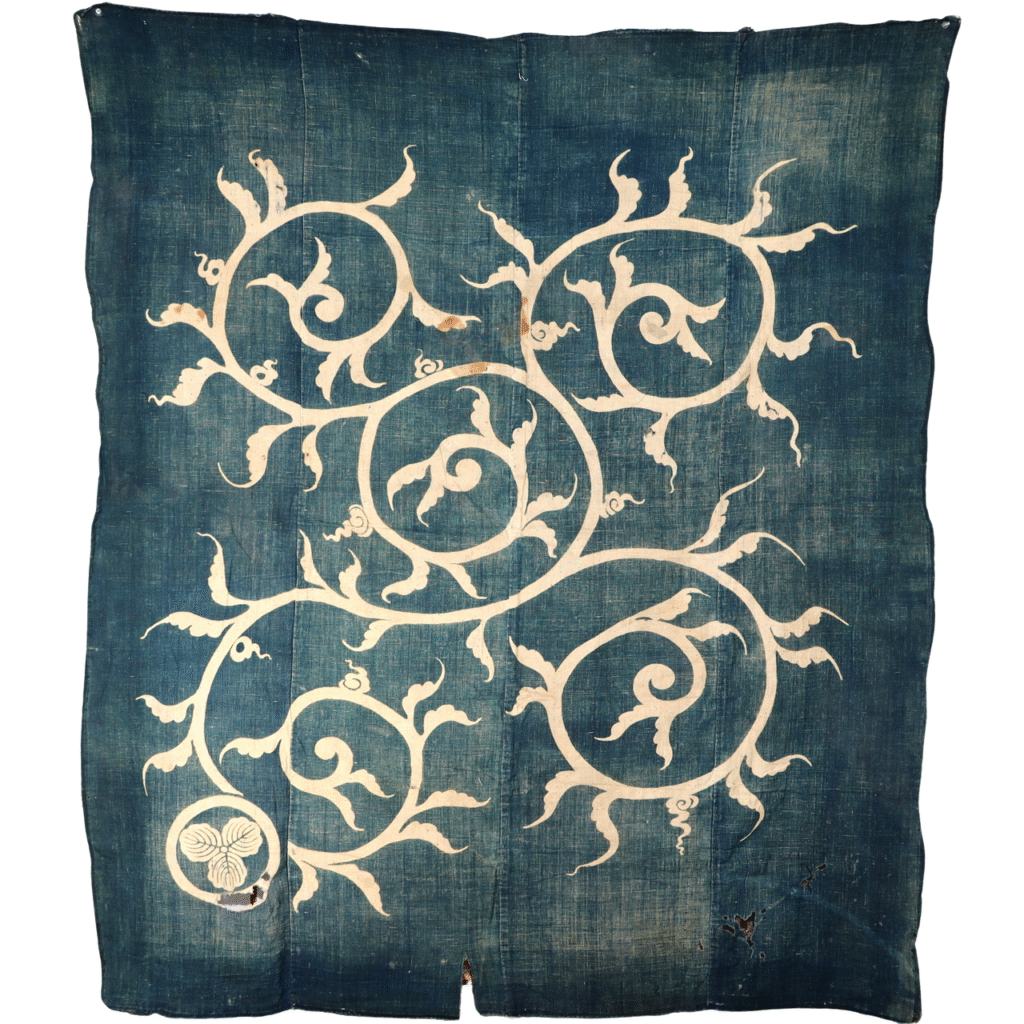
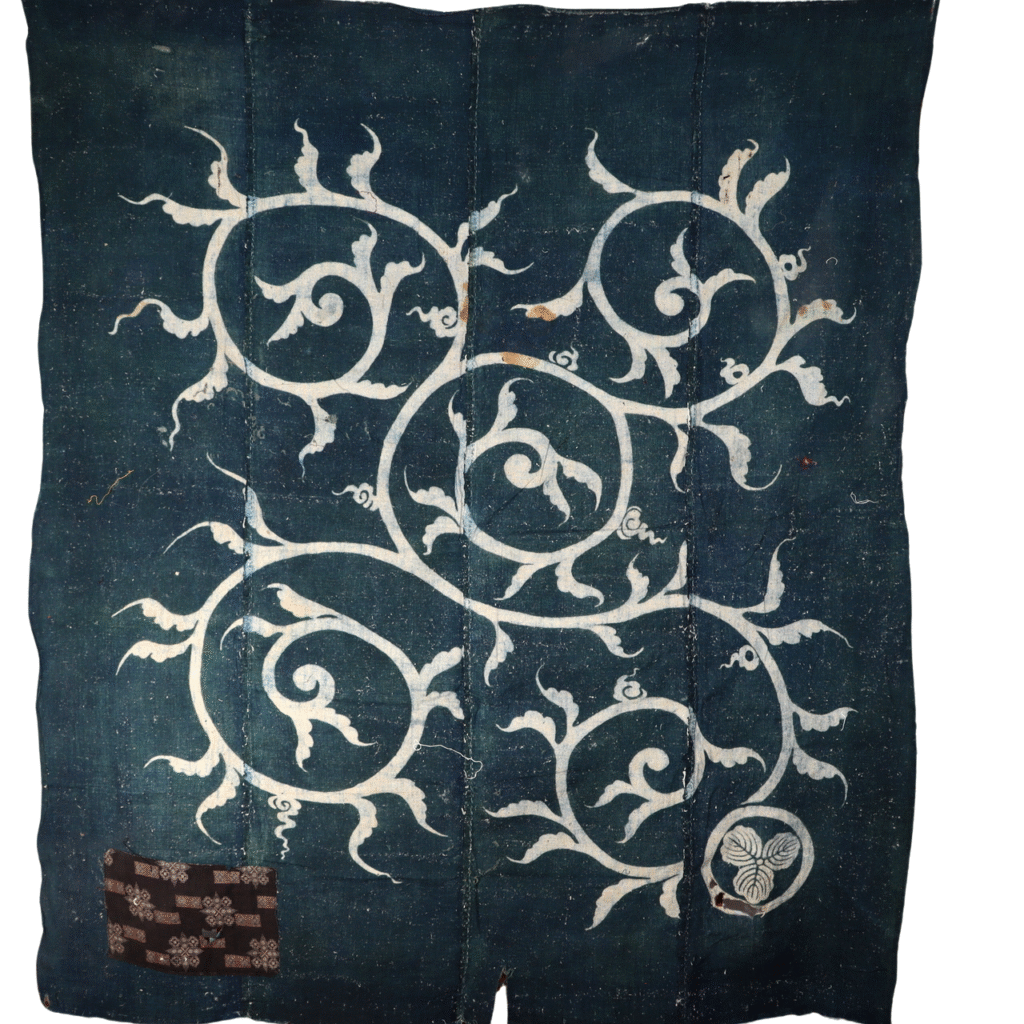
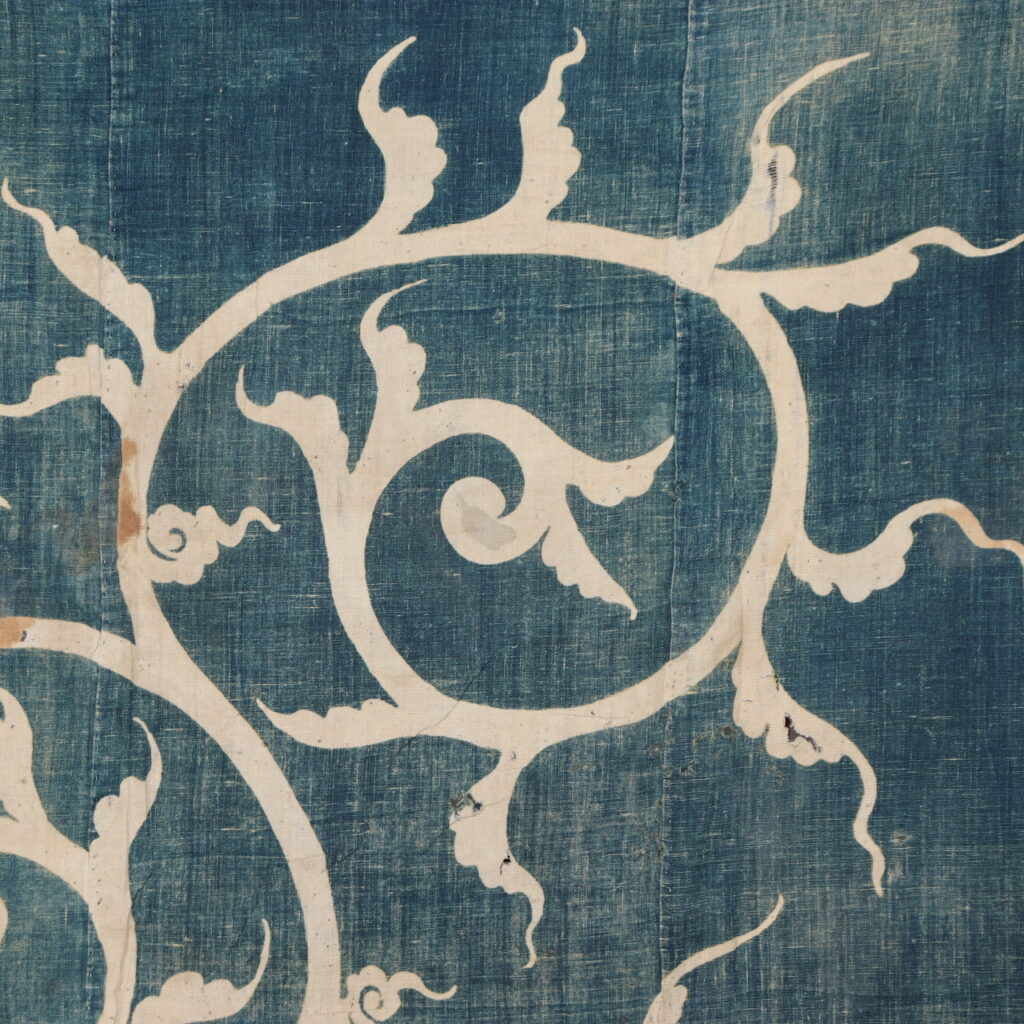
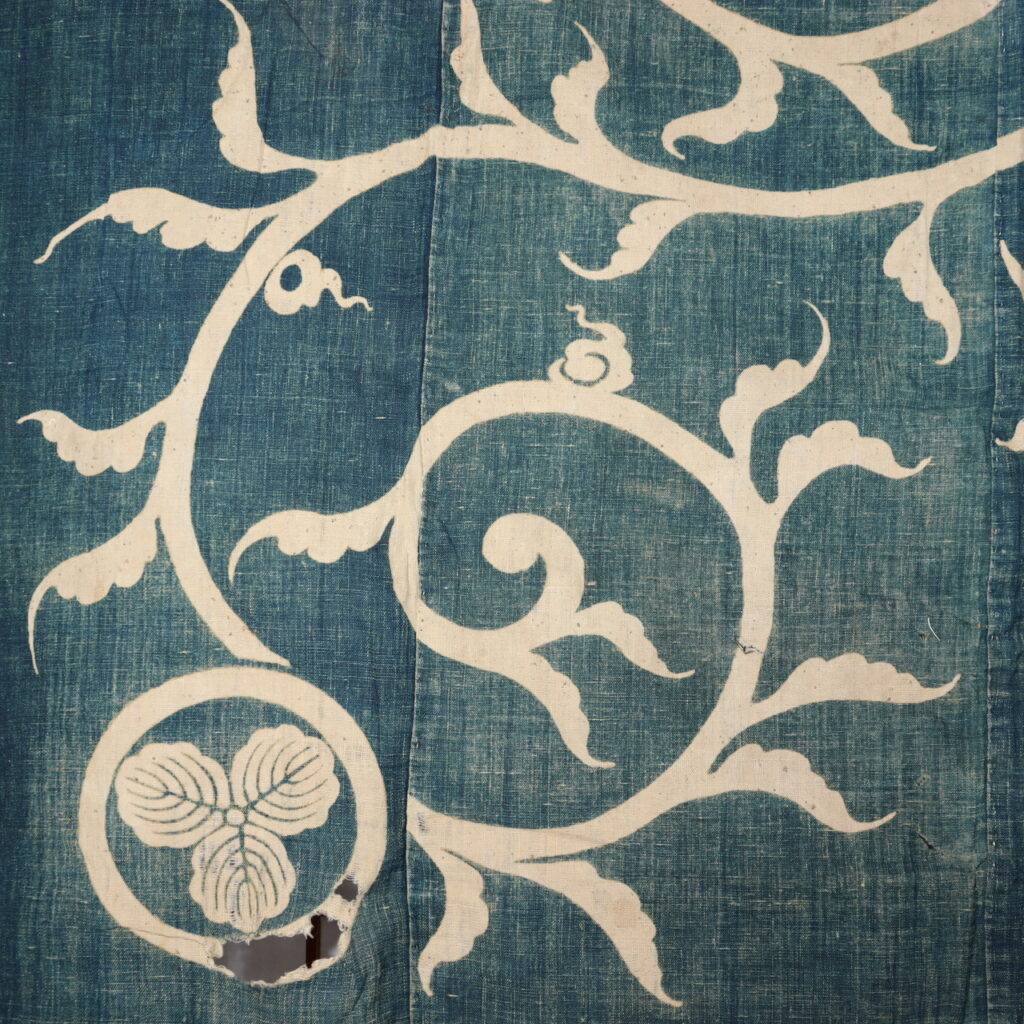
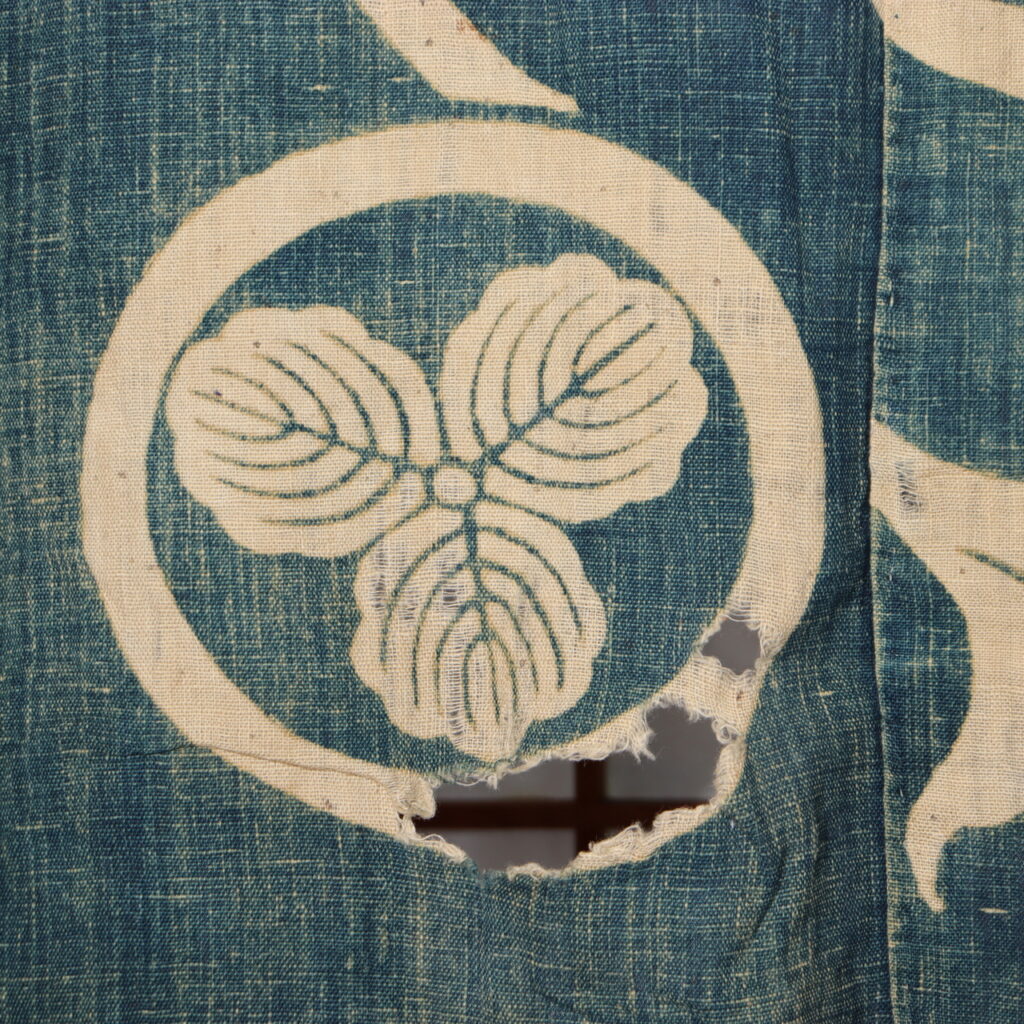
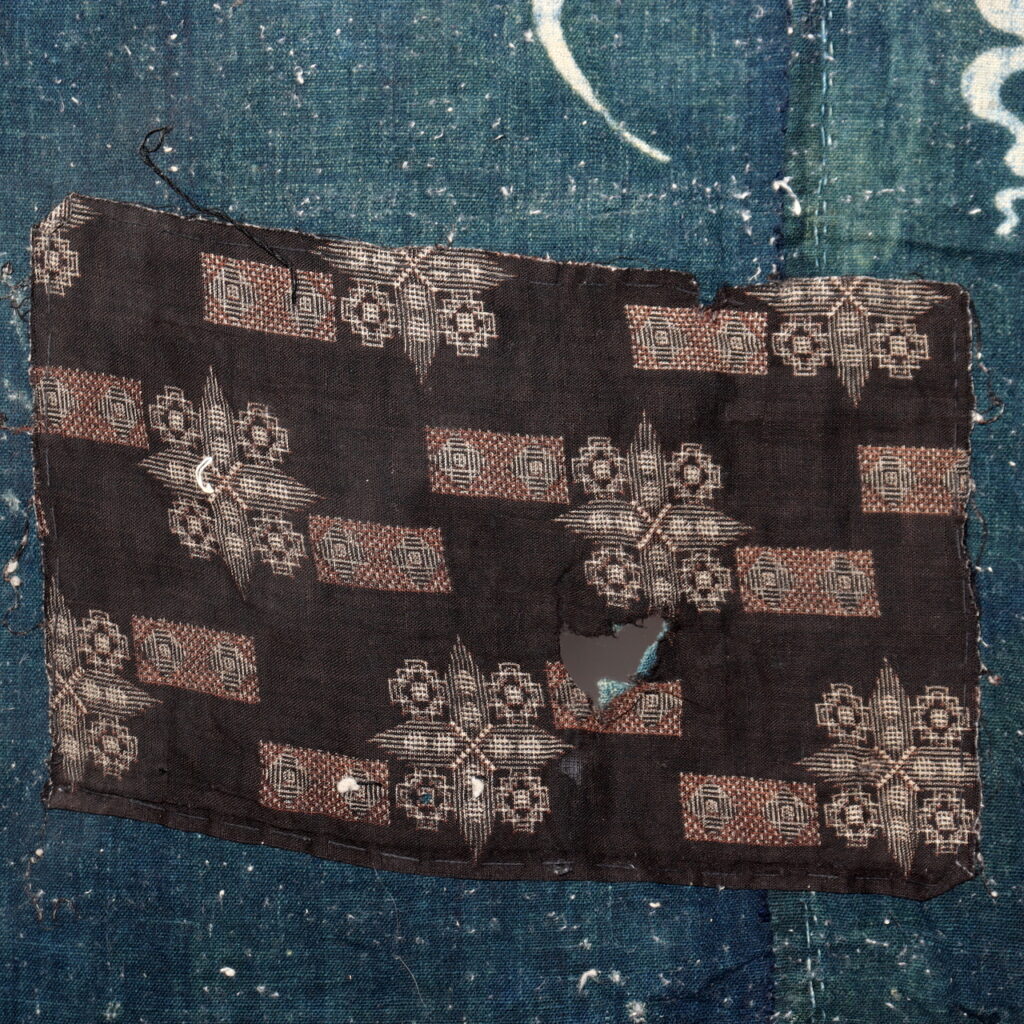
Among the many treasures of Japanese antiques, some carry the silent weight of history—not only as objects of utility, but also as spiritual and cultural emblems. This indigo-dyed cotton furoshiki from the Meiji period is one such artifact: a handwoven textile steeped in ritual, worn through time, and lovingly repaired in the spirit of mottainai.
Bearing the “Maru ni Mitsu Kashiwa” (circle and triple oak leaf) family crest—long associated with Shinto shrines and ceremonial offerings—this piece merges folk practicality with sacred symbolism. Its layered textures and visible mending embody the Japanese aesthetic of imperfection and continuity known as BORO.
The Story Behind the Textile
During the Meiji era (1868–1912)—a time of intense modernization and social transformation—many families still clung to centuries-old traditions, particularly in the countryside. This furoshiki, likely used for wrapping offerings or belongings for ritual use, displays a clear connection to Shinto customs. The prominent oak leaf crest was often employed by Shinto priests or shrine-related households, symbolizing resilience, continuity, and sacred lineage.
The practice of indigo dyeing (aizome) was not only prized for its deep, protective hues but also for its antibacterial properties—making it especially suitable for garments and household textiles. This piece retains its natural, faded indigo tone, testifying to both its use and age.
What Makes This Piece Special
- Handwoven cotton: Durable, breathable, and aged with character.
- Natural indigo dye: Deep blue tones that fade gracefully over time.
- Shinto crest: The Maru ni Mitsu Kashiwa design links the fabric to sacred rituals and family honor.
- BORO patchwork: Visible mends and careful stitching reflect traditional repair techniques—functional and beautiful.
- Wabi-sabi beauty: Imperfection, asymmetry, and age combine into a compelling example of folk Japanese aesthetic.
Every tear and patch speaks of care, resourcefulness, and the cultural value placed on preservation.
Why This Item Resonates with International Collectors
In recent years, Japanese BORO textiles have gained renewed appreciation among designers, textile historians, and folk art collectors for their authenticity and aesthetic originality. This piece stands out for its Shinto connection, adding spiritual depth to its material story.
Whether displayed as a wall hanging, incorporated into a textile art collection, or simply admired for its historical and visual charm, this furoshiki invites contemplation. Its relevance stretches far beyond its original function, making it a cherished artifact for those interested in Japanese folk culture, Shinto iconography, or slow fashion philosophy.
Final Thoughts and How to Find It
This Shinto-related antique furoshiki is not merely a textile—it is a cultural manuscript woven in cotton, pigment, and memory. Its sacred symbolism, practical heritage, and enduring beauty reflect the resilience of Japan’s folk traditions and the spirituality embedded in everyday objects.
🌀 If this item has sold, we invite you to explore similar pieces in our curated collection:
🔗 Browse our Japanese antique textiles and BORO items